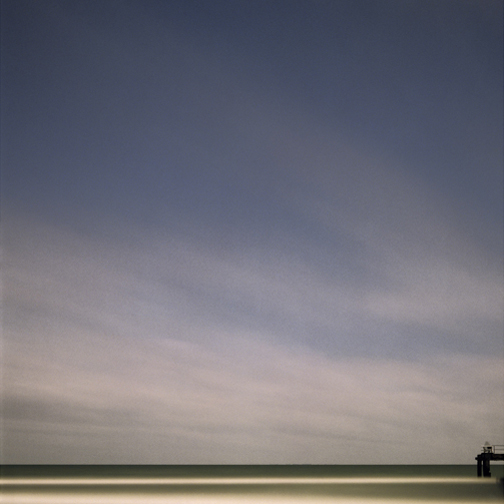
| Trace, 1997 |
| Park, HongChun Exhibition at the Samtuh Gallery from Sept. 26 through Oct. 9 |
| Kim, SunJung, 1997 |
The tempo of modern life increases relentlessly. In our hectic daily routines, we sometimes yearn for but can never find ‘the old speed which was often slow.’ Photography, in which not only space created by framing but also time plays a significant role, is a medium that is as fast as our modern daily life. However, photographer Park, HongChun takes his photographs slowly using a long exposure. That is why his work To Alice, which is included in the Power section of the 1997 Kwangju Biennale, seems to be more congruous with the theme of ‘speed’ when it comes to the physical form of the work. |
In his solo exhibition titled Trace at the Samtuh Gallery, Park, HongChun depicts the seas and seaside benches in Australia, where he lived for one year. Although the photographs of amusement parks from the series To Alice were taken in Korea, there is a strong sense of ‘the unfamiliar’ in them; however, the series Trace, taken in exotic places outside Korea, exudes a sense of intimacy. This is perhaps because ‘the fakes’ – the artificial facilities of amusement parks in the series To Alice – have been replaced with ‘the actuality’ of natural objects and, therefore, the sense of the unfamiliar disappears.
This exhibition review was published in The Monthly Art Magazine WolGanMiSool, Nov. 1998. Kim, SunJung is a Seoul-based independent curator and professor at the Korea National University of Arts. From 1993 to 2004, Kim worked as the chief curator at Artsonje Center, a contemporary art centre in Seoul. She was the commissioner of the Korean Pavilion at the 51st Venice Biennale (2005). In 2006, she initiated the annual contemporary art festival Platform Seoul. Kim was the artistic director of the 6th Seoul International Media Art Biennale - Media City Seoul 2010. Most recently, Kim was appointed as one of the six artistic directors selected to jointly deliver the 2012 Gwangju Biennial and participates in the dOCUMENTA(13) as a curatorial agent.
|